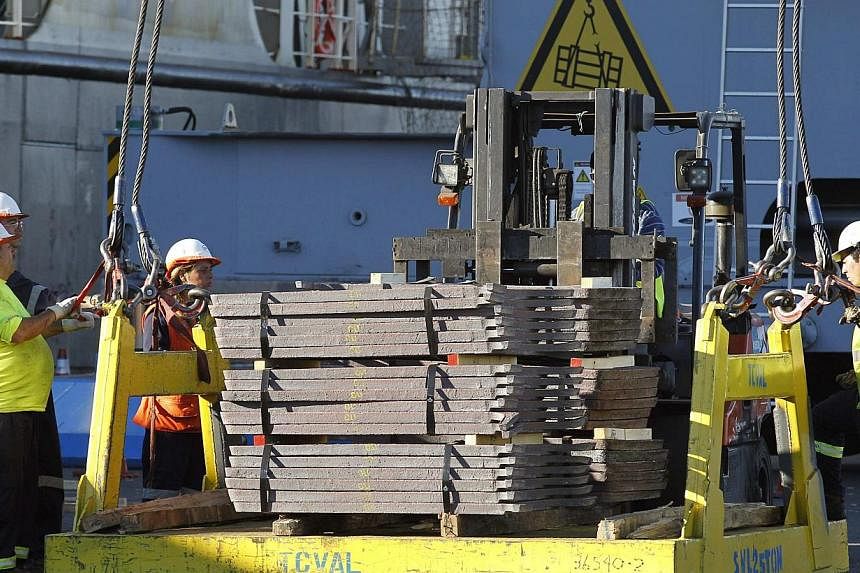As Mark Twain once said, history doesn't repeat itself, but it rhymes.
About 450 years ago, the galleon trade between Acapulco in Mexico and Manila started, and lasted more than 250 years. Trans-shipment trade via the Philippines flourished, as New World silver from Latin America was traded for porcelain, lacquerware and manufactured goods from China.
Between 1500 to 1870, China was the world's biggest economy. Today, China is on track to regain that status, at least in purchasing power parity terms.
"I think that re-establishing the galleon trade for the 21st century between Latin America through the Pacific Alliance and Asia really makes sense," Philippine Secretary of Finance Cesar Purisima told 200 delegates at the inaugural Cartagena Dialogue: The Trans-Pacific Summit, held at the eponymous port city in Colombia last weekend.
The dialogue, which discussed geo-economic and security issues that span the Pacific, was organised by the International Institute of Strategic Studies. Indeed, some major trends already connect the Pacific Alliance - a grouping comprising Chile, Colombia, Mexico and Peru - with their Asian counterparts.
Until the creation of the alliance in 2011, its members were surrounded by two insular blocs: the Common Market of the South (Mercosur), which then consisted of Argentina, Brazil, Paraguay and Uruguay; and the Venezuela-led Bolivarian Alliance for the Peoples of Our America (ALBA).
Like Asean, the Pacific Alliance has witnessed the protracted delay in the World Trade Organisation's Doha Round. Thus, it has sought to expand foreign trade through smaller-scale free trade agreements (FTAs).
Today, the alliance ranks as the world's eighth- biggest economy, with average growth of about 4 per cent. Its exports constitute half the exports of the region and it accounts for 40 per cent of foreign direct investment (FDI).
Pacific Alliance governments are making baby steps to engage countries on the other side of the Pacific. Colombia has opened an embassy in Thailand and consulates in Auckland and Shanghai, and has started to share embassies with other alliance members in Singapore and Vietnam.
Bogota stands at the front of the queue to join the Asia-Pacific Economic Cooperation (Apec) grouping, and wants to join the Trans-Pacific Partnership (TPP), a 12-nation FTA that would include other alliance members as well as the United States and Singapore. Peru, which is a member of Apec and the TPP, has wrapped up FTAs with China, Singapore, South Korea and Thailand.
Asian governments have not been slack either. In January, China hosted a Community of Latin American and Caribbean States (CELAC) meeting. CELAC comprises all South American states, Mexico and several Caribbean states. China's plan is to pump US$250 billion (S$347 billion) in investment into the region and double trade volume to US$500 billion in the next 10 years.
South Korea has signed FTAs with Chile, Peru and Colombia and plans to restart FTA talks with Mexico. Japan, which has FTAs with the same three Pacific Alliance countries, is now engaged in FTA negotiations with Colombia.
And Singapore's role has been significant. The only Asean member to have observer status at Pacific Alliance meetings, it has signed FTAs with Chile and Peru and is part of the TPP, together with Mexico. The Republic has FTAs with Costa Rica and Panama, two countries that could soon join the alliance.
Given Singapore's global orientation, it was not surprising that delegates from Singapore pushed for an Asean-Pacific Alliance FTA. The logic is straightforward: while the TPP has been mired in difficult negotiations, a smaller Asean-Pacific FTA would be the faster track to reach the Free Trade Area of the Pacific - a lofty goal of the 21-member Apec.
An Asean-Pacific Alliance FTA would enable both regions to harmonise trade, boost trans-Pacific FDI and leverage on comparative advantages, said Mr Omar Lodhi, the Singapore-based regional head of East Asia with Abraaj, an investment group with interests in emerging markets.
"It might be heresy to suggest it, but an Asean-Pacific Alliance FTA would be concluded more easily than the TPP," said Mr Barry Desker, distinguished fellow at the S. Rajaratnam School of International Studies and a former chief executive officer of the Singapore Trade Development Board.
There are obstacles, including concerns about the high levels of violence in Latin America and lack of logistical infrastructure, as well as grouses about the 40-hour flight time from South-east Asia to Cartagena.
More importantly, Asean - which is at the centre of multilateral bodies such as the Asean Regional Forum and the East Asia Summit - is suffering from "institutional indigestion", said Dr Marty Natalegawa, a former foreign minister of Indonesia.
The obstacles are not insurmountable.
Both Asean and the Pacific Alliance are seeing the same geopolitical shifts in their respective regions, where countries benefit simultaneously from China's economic growth and security provided by the US. In the end, the delay in the WTO's Doha Round should compel governments to go for quicker solutions such as the proposed Asean-Pacific Alliance FTA.
Dr Marty argues that countries on either side of the Pacific must increase their connectivity, and "put our minds to having some kind of basic norms and principles of how we govern our relationship that can be good not only for today but for years and decades to come".
William Choong is Shangri-La Dialogue Senior Fellow at the International Institute of Strategic Studies (IISS) Asia.

